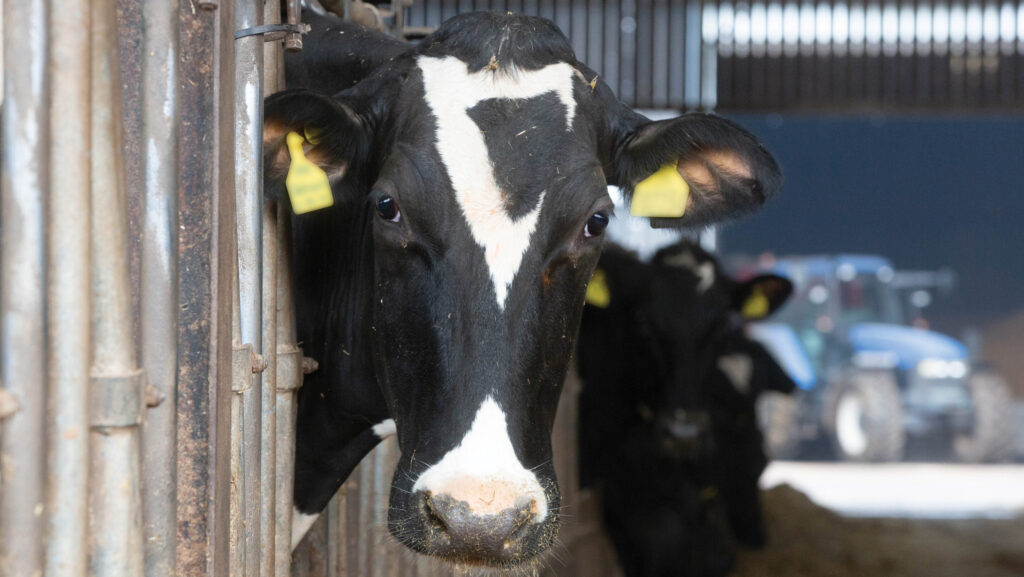UK dairy cattle welfare strategy makes good progress
 © Tim Scrivener
© Tim Scrivener Significant progress has been made in meeting six dairy cow welfare goals, a recent report has highlighted.
The five-year UK Dairy Cattle Welfare Strategy was launched two years ago by Ruminant Health and Welfare (RH&W) with the support of NFU, AHDB and 19 industry signatories, with the aim of demonstrating progress in cow welfare.
See also: Why it is important to optimise dairy cow lying times
An early review indicates that outcomes so far include reduced lameness, better udder health and improved cow comfort.
The six UK dairy cattle welfare strategy goals
- Thriving cows – ensuring all dairy animals are bred and reared to live a long life
- Healthy feet – ensuring a proactive lameness management plan is in place on every UK dairy farm
- Comfortable cows – maximising cow comfort in housing and at pasture
- Appropriately nourished cows – ensuring a healthy body condition throughout the year
- Healthy udders – continued improvements to udder health to reduce cases of mastitis
- Positive welfare – moving towards “positive welfare” by providing an environment that allows animals to exhibit normal behaviours such as curiosity or play
Lameness
A key achievement has been the launch of the GB Dairy Cow Lameness Manifesto, in January 2025.
Backed by more than 25 signatories across industry, this details 21 action points across four strategies to reduce lameness prevalence to less than 5% in 95% of British dairy herds by 2044.
With industry input, skills charity Lantra has also accredited two new levels of award for foot-trimming, focused on urgent treatment and routine prevention, with 362 successful course completions by farmers since 2024.
The Register of Mobility Scorers has also expanded and now includes 860 accredited scorers.
And the development of the AHDB’s Healthy Feet Programme is said to further demonstrate the industry’s commitment to advancing skills-based, welfare improvements at farm-level, with a particular focus on lameness.
Thriving cows
Data show culling and cows exiting the herd between 2020-24 has remained stable, the report highlights.
Somatic cell counts have decreased in recent years, while mastitis incidence has decreased since 2019 from an average of 32 cases in every 100 cows a year to 23 cases in every 100 cows a year in 2024.
Conception rates have also increased, from 36% in 2020 to 40% in 2023, though fertility issues persist as the highest reason behind cow culls.
Further progress has been made through funded vet visits and helping dairy producers to identify the best genetics in their cow and bull selections.
Demonstrable improvements in Johne’s management have also been identified to make positive contributions.
“This has been driven by the National Johne’s management plan, and we can see that the prevalence of Johne’s has gone down substantially since 2020,” said Dr Alison Russell, animal health and welfare scientist at the AHDB.
Comfortable cows
Cow comfort has continued to improve, as evidenced by less hair loss and fewer lesions and swellings, which are used as a measure.
These conditions were seen in 2.3% of cows in 2024, according to Red Tractor welfare assessments.
There were also positive welfare advancements, with an increased focus on providing opportunities for cows to exhibit natural behaviours, through access to brushes and outdoor areas.
Body condition
During 2024, an average of 96% of cows assessed across the UK were in an acceptable condition (between a body condition score of 2 and 4 on a 5-point scale).
Over the past 10 years, the report says, the prevalence of cows that are not in an acceptable body condition has varied marginally.
However, the prevalence of both thin and fat cows were both at their lowest in 2023, compared with previous years of data.
The full report (PDF) is available here .
